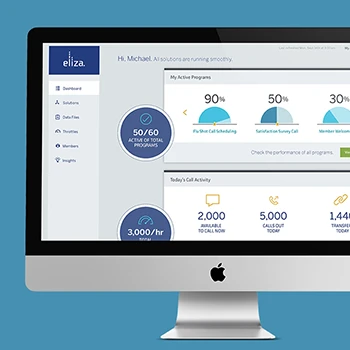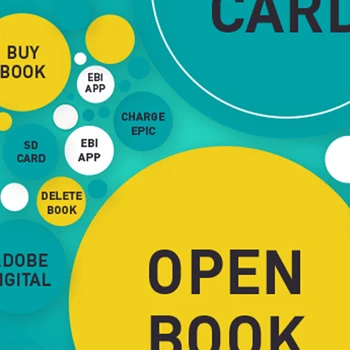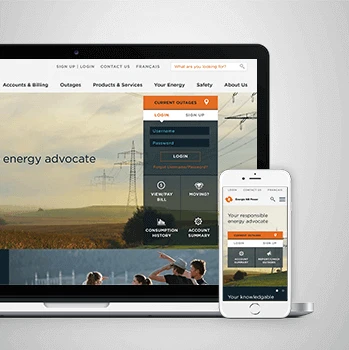What exactly is a product design sprint and why should we consider it?
A product design sprint is an accelerated process that tackles specific product challenges through focused design work in a condensed timeframe. We help organizations rapidly prototype, test, and validate product concepts with real users before significant development investment. Through our Experience Thinking framework, we examine how your product connects across brand, content, product, and service experiences.
Tip: Schedule sprints during critical decision points rather than as ongoing maintenance activities for maximum strategic impact.
How does Akendi's approach to product design sprints differ from traditional methods?
Our sprints integrate the Experience Thinking framework, ensuring solutions connect across all customer touchpoints rather than solving isolated product issues. We examine brand experience, content experience, product experience, and service experience together to create coherent end-to-end solutions. This holistic approach prevents fragmented experiences that often emerge from traditional sprint methodologies.
Tip: Evaluate sprint outcomes across all four Experience Thinking quadrants to identify potential gaps that could undermine your solution's effectiveness.
What types of product challenges are best suited for design sprints?
Design sprints excel at breaking through design stalls, exploring new product directions, validating concepts with users, and solving specific interaction challenges. They work particularly well for new feature development, user flow optimization, and strategic product pivots. Sprints are less effective for detailed visual design work or complex technical architecture planning.
Tip: Frame your challenge as a specific question that can be answered through prototyping and user validation rather than broad exploratory goals.
How do you determine if a design sprint is the right approach for our situation?
We evaluate sprint suitability based on problem scope, timeline constraints, stakeholder availability, and decision-making urgency. Sprints work best when you need rapid validation, have dedicated participant availability, and possess clear decision-making authority. Problems requiring extensive research or long-term strategy development may benefit from alternative approaches.
Tip: Ensure key decision-makers can commit to full sprint participation rather than periodic check-ins for optimal results and momentum.
What's the difference between Discovery Steps, Design Sprints, and Test Sprints?
Discovery Steps focus on foundational questions about users and product direction through research and strategic alignment. Design Sprints tackle specific business questions through rapid prototyping and testing. Test Sprints gather focused user feedback on existing concepts or designs. Each serves different stages of product development with varying time commitments and outcomes.
Tip: Match your sprint type to your current knowledge level—use Discovery when assumptions need validation, Design for solution exploration, and Test for concept refinement.
How do design sprints integrate with agile development cycles?
Design sprints can happen pre-sprint during planning phases, between development sprints, or parallel to coding when appropriate. We structure sprints to align with development timelines and provide validated concepts that development can implement confidently. Sprint outputs become informed inputs for development backlog planning and prioritization.
Tip: Schedule design sprints to complete before development sprint planning sessions to ensure insights inform technical implementation decisions.
What makes a product design sprint successful versus ineffective?
Successful sprints require clear problem definition, committed stakeholder participation, rapid decision-making capability, and willingness to test with real users. They fail when problems are too broad, participants lack authority, or outcomes aren't connected to business decisions. Success depends more on process discipline than creative output volume.
Tip: Define specific success criteria and decision frameworks before starting rather than hoping insights will emerge organically during the sprint.
How long do product design sprints typically take and what determines duration?
Sprint duration varies from 2-day Steps for focused challenges to 4-5 day traditional sprints for comprehensive problems. Extended sprints can run 1-4 weeks for complex product features or complete experience overhauls. Duration depends on problem complexity, scope of user testing required, and depth of solution exploration needed.
Tip: Start with shorter sprints to build team confidence and sprint discipline before attempting longer, more complex challenges.
What does a typical sprint schedule look like day by day?
Day one focuses on problem definition and opportunity mapping. Day two involves solution sketching and concept development. Day three centers on decision-making and prototype planning. Day four is dedicated to rapid prototyping. Day five involves user testing and insight synthesis. Each day has specific goals and deliverables that build toward validation.
Tip: Protect the daily schedule from external meetings and interruptions to maintain sprint momentum and team focus.
How many people should participate in a product design sprint?
Optimal sprint teams include 3-7 participants representing diverse perspectives and decision-making authority. Teams need a facilitator, product owner, designer, developer, and subject matter expert at minimum. Larger teams can slow decision-making while smaller teams may lack necessary expertise or perspective diversity.
Tip: Include one person with final decision-making authority rather than requiring consensus from multiple approvers to maintain sprint pace.
What roles and responsibilities are needed during a sprint?
The sprint team needs a dedicated facilitator to guide process, a decision-maker with authority, a designer for concept creation, a developer for feasibility input, and domain experts for context. External stakeholders can provide input during specific sessions but shouldn't participate in daily activities that require deep focus.
Tip: Clearly define each person's role and authority level before starting to prevent confusion about who makes which decisions during intense sprint moments.
How do you handle remote or hybrid sprint participation?
Remote sprints require dedicated collaboration tools, structured facilitation, and clear communication protocols. We use digital whiteboarding, video conferencing, and shared documentation to maintain engagement and productivity. Hybrid formats need careful coordination to ensure remote participants have equal voice and involvement.
Tip: Test all technology and collaboration tools beforehand rather than troubleshooting during sprint time when every minute impacts momentum.
What preparation is required before starting a design sprint?
Pre-sprint preparation includes problem framing, stakeholder alignment, participant scheduling, space setup, and material gathering. We conduct brief stakeholder interviews, review existing research, and ensure decision-making authority is clarified. Proper preparation prevents delays and ensures productive sprint time.
Tip: Complete stakeholder interviews and problem definition one week before sprint start to allow time for adjustments and alignment.
How do you maintain energy and engagement throughout multi-day sprints?
Sprint energy management involves structured breaks, varied activity types, clear daily goals, and visible progress tracking. We balance individual work with group collaboration, use physical movement between activities, and celebrate small wins throughout the process. Maintaining energy requires intentional facilitation and environmental design.
Tip: Plan sprint activities to match natural energy cycles, scheduling creative work during peak times and administrative tasks during lower-energy periods.
How does Akendi's Experience Thinking framework enhance product design sprints?
Experience Thinking ensures sprint solutions connect across brand, content, product, and service experiences rather than creating isolated improvements. We examine how product changes impact brand perception, content strategy, and service delivery to create coherent end-to-end experiences. This framework prevents common sprint pitfalls of optimizing individual components without considering system-wide effects.
Tip: Map current touchpoints across all four Experience Thinking quadrants before sprint work to understand the full context your product operates within.
How do you ensure brand experience aligns with product sprint outcomes?
We evaluate how product changes support or conflict with brand personality, values, and promise. Sprint solutions are tested against brand guidelines and customer brand perceptions to ensure coherence. Brand experience considerations include visual consistency, interaction personality, and value proposition alignment throughout the product journey.
Tip: Include brand stakeholders in sprint decision-making moments rather than seeking approval after concepts are developed to prevent misalignment.
What role does content experience play in product design sprints?
Content experience encompasses information architecture, messaging strategy, and content presentation across product touchpoints. Sprints address how content supports user goals, reflects brand voice, and enables task completion. We ensure content strategy aligns with interaction design and supports the broader experience ecosystem.
Tip: Prototype with real content rather than placeholder text to identify content strategy issues that could undermine your product experience.
How do product sprints connect to service experience considerations?
Service experience includes support systems, onboarding processes, and ongoing customer relationship management that surround your product. Sprints examine how product changes impact customer service needs, training requirements, and operational processes. We ensure product improvements enhance rather than complicate service delivery.
Tip: Include customer service and operations perspectives in sprint planning to anticipate downstream impacts of product changes.
How does Experience Thinking prevent fragmented sprint outcomes?
Traditional sprints often create optimized islands that don't connect to the broader customer journey. Experience Thinking maintains system-level perspective by evaluating solutions across all touchpoints and lifecycle stages. This prevents improvements that solve immediate problems while creating new friction points elsewhere in the experience.
Tip: Test sprint prototypes within the broader customer journey context rather than as isolated interactions to identify potential system conflicts.
What tools help apply Experience Thinking during rapid sprint timelines?
We use experience lifecycle mapping, touchpoint analysis, and cross-quadrant validation exercises adapted for sprint pace. Quick assessment tools evaluate solutions across brand, content, product, and service implications without slowing sprint momentum. These tools ensure holistic thinking within time-constrained environments.
Tip: Create simple evaluation frameworks based on Experience Thinking principles that your team can apply quickly during sprint decision-making moments.
How do you measure sprint success through an Experience Thinking lens?
Success measurement includes traditional usability metrics plus assessment of brand alignment, content effectiveness, and service integration. We evaluate whether solutions strengthen the overall experience ecosystem rather than just improving isolated product metrics. Success means coherent advancement across all experience dimensions.
Tip: Define success criteria across all four Experience Thinking quadrants before starting rather than only measuring immediate product performance improvements.
How do you validate sprint concepts with real users during short timeframes?
We use rapid prototyping and focused user testing sessions that can happen within sprint timelines. Testing focuses on key assumptions and critical user paths rather than exhaustive evaluation. Methods include prototype walkthroughs, concept validation interviews, and task-based testing with minimal viable prototypes that answer specific questions.
Tip: Design user tests to validate specific hypotheses rather than gathering general feedback to maximize insight value within limited testing time.
What types of prototypes work best for sprint validation?
Sprint prototypes prioritize speed and testability over polish. Paper sketches, digital wireframes, clickable mockups, and role-playing scenarios all serve validation purposes. Prototype fidelity should match the questions being tested—high-fidelity for interaction details, low-fidelity for concept validation and user flows.
Tip: Choose prototype fidelity based on what you need to learn rather than what looks most impressive to stakeholders.
How many users do you test with during sprints and how do you recruit them?
Sprint testing typically involves 5-8 users representing key personas and use cases. We use rapid recruitment through existing customer lists, social media, intercept methods, or professional panels. Quality of participants matters more than quantity for sprint validation, focusing on users who match target personas and have relevant experience.
Tip: Set up user recruitment before sprint week begins rather than trying to recruit during sprint time when every hour counts.
What do you do when user testing reveals major concept flaws during a sprint?
Sprint structure allows for rapid iteration when testing reveals issues. We analyze feedback immediately, identify core problems, and develop alternative approaches within sprint timeframes. Sometimes this means pivoting concepts entirely, other times refining specific interaction patterns. Flexibility and rapid decision-making are essential sprint capabilities.
Tip: Frame negative user feedback as valuable learning rather than sprint failure to maintain team morale and focus on solution iteration.
How do you balance user feedback with business constraints during sprints?
Sprint success requires balancing user needs with technical feasibility, business goals, and resource constraints. We facilitate discussions between user insights and business realities to find viable solutions that serve both. Sometimes this means creative approaches that satisfy user needs within business limitations.
Tip: Include business constraint discussions during concept development rather than after user testing to prevent unrealistic solution directions.
What happens to sprint insights that can't be implemented immediately?
Sprint insights often reveal opportunities beyond immediate scope or timeline. We document broader insights, future opportunities, and systemic issues discovered during sprint work. These findings inform longer-term product strategy and future sprint planning even when not immediately actionable.
Tip: Create systematic processes for capturing and categorizing insights beyond immediate sprint scope to ensure valuable learning isn't lost.
How do you validate concepts for products with complex or specialized user bases?
Specialized products require expert users and domain-specific validation approaches. We adapt testing methods for professional contexts, regulatory requirements, and expert workflows. This might involve longer testing sessions, specialized scenarios, or expert consultation alongside user testing to ensure solutions work in practice.
Tip: Plan extra time for specialized user recruitment and consider expert interviews alongside user testing for products with complex requirements.
How do design sprints connect to broader product strategy and roadmap planning?
Sprints generate validated concepts that inform product roadmap prioritization and feature development planning. Sprint insights reveal user needs, technical constraints, and market opportunities that shape strategic decisions. We ensure sprint outcomes connect to business objectives and influence longer-term product direction rather than existing in isolation.
Tip: Schedule sprint debriefs with product leadership to translate insights into strategic implications and roadmap adjustments.
What business outcomes can we expect from product design sprints?
Sprints accelerate decision-making, reduce development risk, improve user satisfaction, and increase product-market fit confidence. They provide validated concepts that prevent costly development mistakes and align stakeholders around user-centered solutions. Benefits include faster time-to-market, reduced rework, and improved user adoption rates.
Tip: Establish baseline metrics before sprints to measure improvements in decision speed, user satisfaction, and development efficiency.
How do you handle stakeholder buy-in and organizational resistance to sprint approaches?
Sprint adoption requires demonstrating value through pilot projects and clear communication about process benefits. We address concerns about time investment, participant availability, and outcome uncertainty through transparent planning and expectation setting. Success builds organizational confidence in sprint methodology and user-centered design approaches.
Tip: Start with low-risk sprint projects that can demonstrate clear value rather than attempting high-stakes initiatives for initial sprint experiences.
What investment is required for product design sprints and how do you measure ROI?
Sprint investment includes participant time, facilitation, space, materials, and user testing costs. ROI measurement considers reduced development waste, faster decision-making, improved user satisfaction, and decreased project risk. Many organizations find sprint investment pays for itself through prevented development of unsuccessful features.
Tip: Track decision-making speed and development rework reduction as concrete ROI measurements alongside user satisfaction improvements.
How do sprints work with existing product development processes and governance?
We adapt sprint methodology to work within established governance, approval processes, and development methodologies. Sprints can inform existing stage-gate processes, provide input for agile planning, or validate concepts before formal development approval. Integration requires understanding your specific organizational context and constraints.
Tip: Map sprint outputs to existing decision-making requirements rather than trying to replace established governance processes.
How do you maintain sprint momentum when implementation requires long development cycles?
Sprint momentum maintenance involves clear next steps, implementation planning, and continued stakeholder engagement. We help translate sprint insights into development requirements, maintain design intent during implementation, and plan follow-up validation as features launch. Sustained engagement prevents sprint insights from being lost during development.
Tip: Schedule implementation check-ins and design review sessions during development to ensure sprint concepts are realized effectively.
What role does foresight design play in anticipating future user needs during sprints?
Foresight design helps sprints anticipate emerging user behaviors, technology trends, and market shifts that could impact product relevance. We use strategic foresight methods to explore potential futures and design solutions that remain valuable as contexts evolve. This approach helps create products that adapt to changing user expectations rather than solving only current problems.
Tip: Include trend analysis and scenario planning in sprint preparation to ensure solutions account for future context changes.
How do design sprints work for complex enterprise software and B2B products?
Enterprise sprints require understanding complex user hierarchies, workflow integration, and organizational decision-making processes. We adapt sprint methods for longer sales cycles, multiple user types, and regulatory requirements. Enterprise sprints often focus on specific user workflows or decision-making improvements within larger system contexts.
Tip: Include multiple user personas and decision-makers in enterprise sprint planning to account for complex stakeholder relationships and approval processes.
Can design sprints help with existing product optimization versus new product development?
Sprints excel at both new product concepts and existing product improvement. For existing products, sprints can tackle specific usability issues, explore new feature directions, or optimize user flows. The key difference is having existing user data and feedback to inform sprint direction rather than starting from concept validation.
Tip: Use existing analytics and user feedback to frame optimization sprint challenges rather than starting with general improvement goals.
How do you adapt sprints for products with strict regulatory or compliance requirements?
Regulated product sprints must balance innovation with compliance constraints. We work within regulatory frameworks while finding creative solutions that improve user experience. This involves understanding specific requirements, including compliance experts in sprint work, and validating solutions against regulatory standards alongside user needs.
Tip: Include regulatory and compliance experts in sprint planning to understand constraints before concept development rather than validating compliance afterward.
What's the approach for sprints involving AI-powered or data-driven product features?
AI and data-driven sprints focus on user experience of algorithmic systems rather than the algorithms themselves. We examine how users understand AI recommendations, trust system decisions, and maintain control over automated features. Sprints help design transparent, trustworthy AI experiences that serve user needs effectively.
Tip: Focus AI sprints on user trust, transparency, and control rather than algorithmic performance to create more human-centered AI experiences.
How do sprints address accessibility and inclusive design considerations?
Inclusive sprints integrate accessibility considerations from the beginning rather than adding them afterward. We include diverse users in testing, consider multiple interaction modalities, and design for cognitive and physical accessibility. Accessibility becomes a design constraint that drives creative solutions rather than limiting innovation.
Tip: Include users with disabilities in sprint testing and validation rather than relying only on accessibility guidelines to understand real-world accessibility needs.
Can design sprints work for hardware products or physical-digital integrated experiences?
Physical product sprints use different prototyping methods but follow similar validation principles. We create physical mockups, service scenarios, and integrated experience prototypes that test both digital and physical components. Hardware sprints often require longer timelines for prototyping but provide valuable validation before expensive tooling investments.
Tip: Plan additional time for physical prototyping and consider digital-only testing for interaction concepts before creating physical prototypes.
How do you handle global products that need to work across different markets and cultures?
Global product sprints must account for cultural differences, local regulations, and market variations. We adapt testing methods for different markets, consider cultural context in solution development, and plan for localization requirements. Sometimes this means running parallel sprints in different markets or focusing on universal needs that transcend cultural boundaries.
Tip: Include local market experts and users from target regions in sprint planning and validation to avoid cultural assumptions that could limit global product success.
How can foresight design principles help sprints anticipate emerging technology trends?
Foresight design integration helps sprint solutions remain relevant as technology evolves. We explore potential impact of emerging technologies like voice interfaces, augmented reality, or IoT on user behaviors and expectations. This approach helps create adaptable solutions that can evolve with technological advancement rather than becoming obsolete quickly.
Tip: Include technology trend analysis in sprint discovery work to identify opportunities for future-proofing your product concepts.
What deliverables and documentation do you provide after a design sprint?
Sprint deliverables include tested prototypes, user testing insights, implementation recommendations, and strategic next steps. We provide detailed documentation of decisions made, alternatives considered, and validation results. Deliverables are designed for development hand-off and stakeholder communication rather than comprehensive design specifications.
Tip: Specify required deliverable formats before sprint start to ensure outputs match your development and approval processes.
How do you prevent sprint insights from being lost during subsequent development?
Design drift prevention requires ongoing collaboration between sprint participants and development teams. We provide design rationale documentation, participate in development planning, and offer implementation support to maintain sprint concept integrity. Regular design reviews during development help catch deviations before they become systemic issues.
Tip: Schedule regular design review checkpoints during development rather than only reviewing at launch to prevent gradual drift from sprint concepts.
What follow-up work is typically needed after a design sprint completes?
Post-sprint work often includes detailed design development, technical specification creation, user research expansion, and implementation planning. Sprints provide direction and validation but rarely produce production-ready designs. Follow-up work translates sprint insights into actionable development requirements and detailed experience specifications.
Tip: Plan post-sprint design development timeline and resources before starting sprint work to maintain momentum and prevent concept abandonment.
How do you measure long-term success of products developed through design sprints?
Long-term sprint success measurement includes user adoption rates, satisfaction scores, business metric improvements, and strategic goal achievement. We track whether sprint predictions about user behavior prove accurate and how solutions perform in real-world use. Success measurement helps refine sprint methodology and validate approach effectiveness.
Tip: Establish success metrics and measurement plans during sprint work rather than trying to determine success criteria after product launch.
What common pitfalls should organizations avoid when implementing design sprints?
Common sprint pitfalls include unclear problem definition, insufficient stakeholder commitment, skipping user validation, and lack of implementation planning. Organizations also struggle with maintaining sprint discipline, making decisions without authority, and treating sprints as design production rather than validation processes.
Tip: Focus sprint success on learning and validation rather than design output quality to maintain proper sprint focus and avoid scope creep.
How do you build internal capability for running design sprints versus always using external facilitation?
Internal sprint capability development involves facilitator training, process documentation, and organizational change management. We provide training, mentoring, and gradual responsibility transfer to build internal expertise. Organizations benefit from both internal capability and periodic external facilitation for complex or high-stakes challenges.
Tip: Start capability building with external facilitation while training internal facilitators rather than attempting sprint methodology without expert guidance.
How does Experience Thinking enhance sprint outcome sustainability and impact?
Experience Thinking ensures sprint solutions integrate with broader experience ecosystem rather than creating isolated improvements. This systematic approach prevents sprint outcomes from being undermined by disconnected touchpoints or conflicting experience elements. Solutions become more sustainable because they strengthen the entire experience rather than optimizing individual components.
Tip: Evaluate sprint impact across the complete customer journey rather than only measuring immediate product interaction improvements.
How can organizations use foresight design thinking to create more strategic sprint outcomes?
Foresight design integration helps sprints generate solutions that remain valuable as user needs and market conditions evolve. By considering future scenarios and emerging trends during sprint work, organizations create more resilient product concepts that adapt to change. This strategic approach helps sprint investments continue delivering value over longer timeframes.
Tip: Include scenario planning and trend analysis in sprint preparation to ensure solutions account for potential future context changes rather than only solving current state problems.












